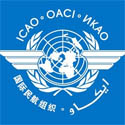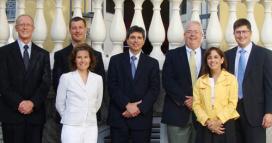Volpe Analysis Contributes to New International Aviation Noise Standards
 Over several decades, to the delight of people who live or work on flight paths and near airports, aircraft have gotten quieter. The reduction in noise from aircraft, which comes from improved design and technologies, has been hastened by the application of stringent international noise standards developed by the International Civil Aviation Organization (ICAO).
Over several decades, to the delight of people who live or work on flight paths and near airports, aircraft have gotten quieter. The reduction in noise from aircraft, which comes from improved design and technologies, has been hastened by the application of stringent international noise standards developed by the International Civil Aviation Organization (ICAO).
In February, ICAO's Committee on Aviation Environmental Protection agreed to a new noise standard for new-design aircraft entering into service in 2017 (and for lower-weight aircraft entering into service in 2020). The standard will be presented for further consideration by the ICAO Council after formal state consultation.
In Montreal—home to poutine, Cirque du Soleil, and ICAO—the Volpe Center's Gregg Fleming, along with a colleague from Transport Canada, presented the findings of the environmental and economic assessments to inform the process of setting new noise standards. Fleming is director of the Volpe Center's Center for Environmental and Energy Systems and co-rapporteur of ICAO's Modeling and Databases Group. The U.S.-led environmental analysis considered a range of noise stringency levels, and measured the environmental benefit in terms of the geographic area over which noise would be reduced and the population that would benefit from the noise reduction. The economic analysis, also led by the U.S., examined the costs associated with new noise standards.
"This new noise standard is an important step for aviation and will provide a much quieter environment for the many communities living in proximity to the world's airports," commented ICAO Secretary General Raymond Benjamin in an ICAO press release. Benjamin noted that this new noise standard was developed in less than half the time of the previous noise standard.
The new noise standard will be 7 effective perceived noise level in decibels (EPNdB) below ICAO's current standard. The EPNdB metric is the internationally accepted noise measure for certifying aircraft. The new noise standard is more aggressive than the previous standard in terms of the number of aircraft impacted.
"This was a data-driven decision," said Fleming. ICAO's Modeling and Databases Group, along with ICAO's Forecasting and Economics Support Group (on which Volpe economist David Pace serves), conducted the environmental and economic assessment of the noise stringency scenarios that were the basis for the final policy decision. "In general, the assessment showed increasing environmental benefit with increasing noise stringency. The environmental benefit balanced with cost considerations led to the ultimate policy agreement by ICAO/CAEP's member states," said Fleming.
ICAO, created in 1944 to promote the safe and orderly development of international civil aviation throughout the world, is a specialized agency of the United Nations.

The U.S. delegation to ICAO/CAEP (from L-to-R): Curtis Holsclaw, Deputy Director, FAA's Office of Environment and Energy (AEE); Mike Samulski, EPA's Office of Transportation Air Quality; Julie Marks, Division Manager, FAA/AEE; Jim Skalecky, Deputy Program Office Manager, FAA/AEE; Gregg Fleming, Volpe's Director of Environmental and Energy Systems; Lourdes Maurice, Executive Director, FAA/AEE and U.S. Representative to ICAO/CAEP; and Kevin Welsh, Senior International Advisor, FAA/AEE.
